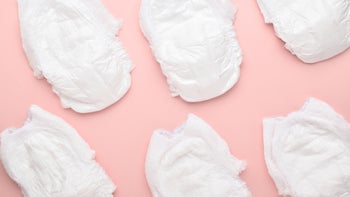
Is There Really a ‘Best Baby Formula’? What to Know Before Switching Brands
Key takeaways:
Commercial infant formulas are the best substitute for breast milk.
Infant formulas made in the U.S. are regulated by the FDA. That means they have to contain certain ingredients, vitamins, and minerals.
The “best” formula depends on your baby’s nutritional needs. Most babies only need standard infant formula to grow and develop.
Table of contents

Babies grow a lot in their first year and proper nutrition is a vital part of that process. The American Academy of Pediatrics (AAP) recommends breastfeeding for the first 6 months of a child’s life. But that’s not an option that works for all families.
Infant formulas are the best substitute for human milk. The FDA regulates all infant formula made in the United States. That means you can be sure that the formula you buy meets strict requirements for nutritional content and safety.
But with an ever-expanding market, how can a parent choose the “right” baby formula? It turns out that the “best” baby formula depends on your baby’s needs and preferences.
Search and compare options
What are the best baby formulas?
The “best” baby formula brand may differ from baby to baby. But one thing is certain — the safest and most reliable formulas are the ones manufactured in the U.S.
The FDA regulates commercial infant formula just like it regulates medications. When you buy a baby formula that’s made in the U.S. you know for certain that the formula contains all the nutrients your baby needs for proper growth and development. The amount of each of these nutrients is the same, no matter which brand you buy. So even generic or store-label formulas contain the right amount of:
Vitamins
Minerals
Iron
Essential fatty acids
Carbohydrates
Proteins
You can also be certain that the formula has gone through rigorous safety checks and that the manufacturer follows the FDA regulations.
Formula manufactured outside the U.S. doesn’t have to meet FDA safety or nutrition standards, even if these brands are sold in U.S. stores.
The European Commission regulates formula production in Europe. But European formulas have several differences from U.S. formulas, including lower iron content. They also use different ingredients in their formula production. Experts consider formulas that are regulated by the European Commission to be safe for infants. But if you choose these options, make sure you get them from a reputable supplier, like a grocery store or pharmacy. Don’t purchase from individuals.
Read more like this
Explore these related articles, suggested for readers like you.
Tread carefully if you choose to use formulas made outside the U.S. or Europe. They may not contain everything your baby needs for growth and development. Some countries don’t regulate infant formulas as strictly, so safety can be a concern, too.
And you definitely want to avoid homemade baby formula. The AAP, the FDA, and the CDC all agree that you shouldn’t feed your baby homemade formula because there’s evidence that it can harm a baby’s health. There’s also no evidence that homemade formulas offer health benefits over commercial formulas.
What other ingredients should you look for in infant formula?
It’s not clear that you need to look for additional ingredients beyond what’s required by the FDA.
Formula makers have started to add other ingredients to infant formulas like prebiotics, probiotics, and additional vitamins or fatty acids. These additions allow formula makers to say that their product promotes things like “brain development” and “eye health.”
Researchers have found these added ingredients don’t hurt babies. So the FDA has allowed manufacturers to add these items to formula. But it’s not clear if these ingredients provide health benefits either.
Some formula makers also advertise that they use non-GMO products to make their formula. Others state they use organic ingredients. These claims are checked by the FDA. But again, it’s not clear whether non-GMO or organic ingredients make a major impact on a baby’s health and development.
What to consider when picking a baby formula
The jury is still out on the various “add-ons” when it comes to baby formula. But there are some factors you want to consider when choosing a commercial infant formula that’s made in the U.S.
The protein in most infant formulas comes from cow’s milk. Most babies don’t have a problem with the cow’s milk protein. But babies with certain medical conditions need formulas that contain protein from other sources or protein that’s broken down or modified. Some families prefer not to use a formula that’s derived from cow’s milk. When it comes to protein, here are the major differences between proteins in formula:
Cow’s milk-based formulas: This is “regular” infant formula.
Hydrolyzed formulas: Hydrolyzed formulas contain protein that’s broken down. These proteins may still come from cow’s milk, though. Hydrolyzed proteins are easier for a baby to digest. They may also be the right choice for babies with milk protein allergies. Examples of hydrolyzed formulas include Alimentum and Nutramigen. Some formulas contain only partially broken down proteins. These options are usually aimed at babies who experience colic. Popular examples include Gentlease and Similac Total Comfort.
Amino-acid-based formulas: Amino-acid-based formulas are hypoallergenic. Instead of proteins, these formulas contain amino acids. Amino acids are the building blocks of proteins so infants don’t have to break down the protein at all. Examples include Elecare and Neocate.
Soy-based formulas: Soy-based formulas contain soy protein instead of cow's milk protein. These are a good option for people who prefer a vegetarian alternative.
Talk with your child’s primary care provider before changing your formula brands. They can help you choose the formula that fits your baby’s needs.
How do you use baby formula?
Formula comes in three forms: powder, concentrate, and ready-to-feed. Each form has pros and cons. But they all contain the same ingredients. So you can pick whichever form works best for your daily routine. Here are the main differences:
Powder: This formula comes in large cans. Mix one scoop of powder for every 2 oz of water. You can make one bottle at a time. Or you can mix up a day’s worth of formula to keep in the fridge. And you can store unused formula in the refrigerator for up to 24 hours. This is the most cost-effective form.
Concentrate: Mix equal parts water and concentrate to make a bottle. You can store any premade amount in the refrigerator for up to 48 hours. This form of formula is convenient but costs more.
Ready-to-feed: This formula option comes in different size containers and is ready to use. You can store unopened formula at room temperature. This type of formula is very convenient, but it’s also more expensive than powder or concentrate.
How to use water when making formula
Parents often wonder about what kind of water to use when preparing formula. You can use regular tap water as long as it meets local safety standards. You can also use bottled water to make formula.
Boiled water helps protect babies from Cronobacter, a bacteria that has been found in powdered formula. It’s a good idea to boil tap water for infants younger than 2 months old, infants who were born prematurely, or those with weakened immune systems. Heat the water until it’s boiling for a minute, then let it cool to room temperature. Then mix in formula. After you make a bottle, check the temperature by putting a few drops on your wrist. You should still boil bottled water if you’re using that.
Here are some additional tips on water:
Put water in the bottle first. When making a bottle, put the water in the bottle first. Then add the powder or concentrate and mix.
Use the right amount. Follow directions on the formula label to make sure your baby doesn’t get too much water. A baby’s kidneys can’t handle extra water. Excess water can cause electrolyte imbalances and seizures.
The bottom line
The FDA regulates all infant formula made in the U.S. That means all formula brands have to contain the same primary ingredients and pass strict safety standards. The best formula for your baby is often a standard infant formula. Some children need specialty formulas. Talk with your child’s primary care provider before you switch formula brands.
Why trust our experts?


References
Abrams, S. A. (2024). How to safely prepare baby formula with water. HealthyChildren.org.
Centers for Disease Control and Prevention. (2023). Choosing an infant formula.
Centers for Disease Control and Prevention. (2023). Cronobacter infection and infants.
D’Auria, E., et al. (2021). Hydrolysed formulas in the management of cow's milk allergy: new insights, pitfalls and tips. Nutrients.
Fuchs, G. J., III., et al. (2023). Choosing a baby formula. HealthyChildren.org.
Korioth, T. (2019). Don’t feed homemade formula to babies; seek help instead. AAP News.
Lane, A. (2022). Everything you need to know about European baby formula. USA Today.
Meek, J. Y., et al. (2022). Technical report: Breastfeeding and the use of human milk. Pediatrics.
U.S. Food and Drug Administration. (2023). Infant formula: Safety do's and don'ts.
U.S. Food and Drug Administration. (2023). Questions & answers for consumers concerning infant formula.
Zimlich, R. (2021). Which formulas are best for infants with cow’s milk allergy? Contemporary Pediatrics.





























